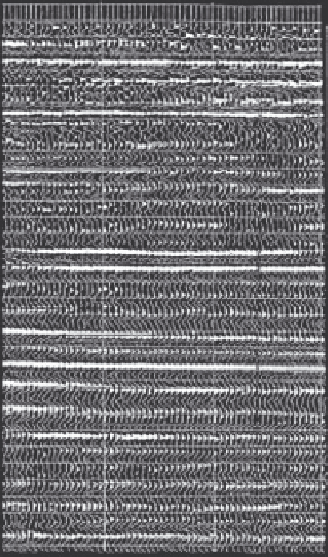Environmental Engineering Reference
In-Depth Information
Fill material
Interbedded sand and clay
Sand
Clay
Sand
Interbedded sand and clay
Sand
FIGURE 4.6
Seismic profile showing subsurface geology.
objective for conducting a risk assessment is to evaluate whether there is an unacceptable
risk posed by the presence of contamination at a given site for the future intended use of
the property (USEPA 2002). Intended land use usually fits into the three broad categories of
industrial, commercial, and residential. In general, if the intended land use is industrial or
commercial, higher concentrations of contaminants are allowed if certain site conditions
are satisfied to minimize the exposure potential to the contamination.
An environmental risk assessment follows scientific procedures for evaluating the
risk to humans and the environment posed by the contamination present at a specific
site. Three basic components are used to evaluate risk: (1) toxicity or potency of con-
taminants present, (2) exposure pathways, and (3) receptors (California Environmental
Protection Agency 1996; Oregon Department of Environmental Quality [ODEQ] 1998;
USEPA 2002).
Toxicity
: Toxic substances or toxicants are health threats because of the resultant effects
on biotic receptors when exposure to these toxicants occur. The following chemical haz-
ards found commonly at hazardous waste sites may be classified as toxic: chemicals fatal
to humans in low doses or to over 50% of test animals at certain concentrations; Hazardous
substances: chemicals that can cause harm because they are flammable, explosive, strongly
acidic or basic, or can induce allergic reactions; Carcinogens: chemicals along with radia-
tion and viruses that can cause or promote the growth of malignant tumors or cancer;
Mutagens: chemicals, including ionizing radiation and viruses that cause mutations—
inheritable changes in DNA molecules in the genes found in chromosomes; Teratogens:
chemicals, ionizing radiation and viruses that cause birth defects. Toxicants include a wide
variety of substances such as metals, most commonly Sb, As, Ba, Be, Cd, Cr, Co, Cu, Hg,











Search WWH ::

Custom Search